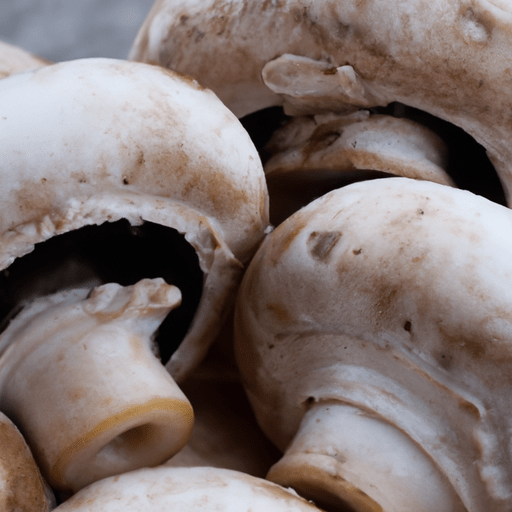The Versatile Mushroom: A Culinary Delight
Mushrooms, nature’s hidden gems, have emerged as stars in the culinary world. With their unique taste, nutritional value, and intriguing history, these fungi are sure to delight even the most discerning palates. Whether you sauté them to enhance a dish’s depth of flavor or use them as the star ingredient, mushrooms offer a world of culinary possibilities.
Taste and Texture
The flavor and texture of mushrooms are truly remarkable. With an earthy and umami-rich taste, they bring a deep, savory note to any dish. Their texture can range from delicate and tender, like the button mushroom, to meaty and robust, like the portobello.
One of the most sought-after varieties is the shiitake mushroom. Its complex flavor profile combines a meaty texture with hints of smokiness and a subtle sweetness. Chanterelles, known for their trumpet-like shape and vibrant yellow color, offer a delicate and slightly peppery taste. Meanwhile, porcini mushrooms deliver a nutty and earthy aroma, making them a popular choice in soups and sauces.
Culinary Uses
Mushrooms are a versatile ingredient used in various culinary traditions around the world. They can elevate both vegetarian and meat-based dishes, adding depth and complexity. Common cooking methods for mushrooms include:
Sautéing
Sautéing mushrooms in butter or oil until golden brown intensifies their rich flavors. This method is often used as a base for sauces, toppings, or even a simple side dish.
Roasting
Roasting mushrooms brings out their natural sweetness while retaining their wonderful umami taste. Tossed with olive oil, herbs, and a sprinkle of salt, they make a perfect addition to salads, pasta dishes, or an appetizing side.
Stuffing
Mushrooms with their cup-like shape are perfect for stuffing. A popular choice is to fill portobello mushrooms with a mixture of cheese, breadcrumbs, herbs, and spices before baking to create a satisfying and flavorful vegetarian main course.
Soups and Stews
Mushrooms are a staple in comforting soups and hearty stews. They add richness and depth to broths and work harmoniously with other ingredients, creating a symphony of flavors in every spoonful.
Nutritional Value
Beyond their culinary allure, mushrooms also offer numerous health benefits. Low in calories and fat, they are a valuable source of essential nutrients. They contain important vitamins such as vitamin D, B vitamins, and minerals like potassium and selenium. Mushrooms are also rich in dietary fiber, aiding digestion and supporting gut health.
In addition, mushrooms are uniquely high in antioxidants. These compounds help protect our bodies from the harmful effects of free radicals and reduce inflammation, contributing to overall well-being.
Fascinating Facts and History
Mushrooms have a captivating history and a few intriguing facts worth knowing:
- Cultivated since ancient times, mushrooms were considered a delicacy by the ancient Egyptians, Aztecs, and Romans.
- Some species of mushrooms have medicinal properties and have been used in traditional medicine for centuries.
- Mushrooms are not plants but belong to their own kingdom, called Fungi. They are neither animal nor vegetable.
- Agaricus bisporus, commonly known as the button mushroom, accounts for over 90% of the mushrooms consumed in the United States.
Conclusion
It’s undeniable that mushrooms are a true culinary delight. From their distinctive taste and versatile uses in the kitchen to their impressive nutritional profile and fascinating history, these fungi captivate both novice and seasoned cooks alike. So, why not explore the magic of mushrooms and let them add their unique touch to your next culinary creation? Get inspired and savor the immense flavors mushrooms have to offer!
Fresh Mushrooms
Origin: Mushrooms are fungi that belong to the kingdom Fungi. They have been consumed by humans for thousands of years and can be found growing naturally in various parts of the world, including forests, grasslands, and even on decaying wood.
Common Uses: Fresh mushrooms are versatile ingredients used in a wide variety of cuisines around the world. They can be sautéed, grilled, baked, or used raw in dishes such as salads. Mushrooms are often included in soups, stews, stir-fries, pasta dishes, and vegetarian/vegan alternatives to meat-based dishes. They have a unique umami flavor that can add depth and richness to many dishes.
Nutritional Benefits: Fresh mushrooms are low in calories and fat while providing valuable nutrients. They are an excellent source of B vitamins, such as riboflavin (vitamin B2), niacin (vitamin B3), and pantothenic acid (vitamin B5). Mushrooms are also a rich source of minerals like potassium, copper, and selenium. They provide dietary fiber and are known to be a good plant-based source of vitamin D when exposed to UV light.
Unique Properties: Mushrooms possess unique properties that distinguish them from other ingredients. For example, they are one of the few natural food sources that contain significant amounts of ergosterol, which can be converted into vitamin D when exposed to sunlight or UV light. Additionally, mushrooms have a porous structure that allows them to absorb flavors during cooking, making them excellent flavor absorbers and enhancers.
Historical Significance: Mushrooms have been highly regarded throughout history and have been used for various purposes. Ancient Egyptians considered mushrooms to be a delicacy and reserved them for royalty. In traditional Chinese medicine, mushrooms were valued for their medicinal properties and were used to treat various ailments. Ancient Greeks and Romans praised mushrooms for their taste and believed they had mystical properties.
Please note that while mushrooms are widely consumed and generally safe, it is crucial to exercise caution when foraging wild mushrooms. Many species are toxic, and misidentification can lead to severe illness or even death.




Use the share button below if you liked it.
It makes me smile, when I see it.